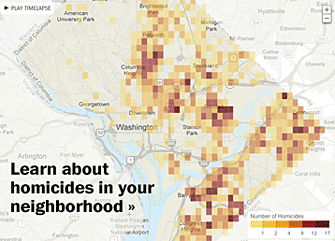So Templeton trudged to the National Archives early Sunday morning, planted himself outside the bronze doors and became the first person to walk through the metal-detecting magnetometers, up the marble stairs, past the Public Vaults and the Magna Carta and America’s founding charters.
There, on the far side of the Rotunda Gallery, two of the five original pages of the Emancipation Proclamation sat under a plexiglass case, in front of two armed guards.
Archives conservators have briefly — and only partially — emancipated the delicate document for three days, putting it on public display from Sunday through Tuesday, on the occasion of its 150th anniversary.
“I love to see primary sources,” Templeton said. “And for me, the Emancipation Proclamation is the most important document in African American history. This is it.”
Lincoln issued the Emancipation Proclamation on Jan. 1, 1863, declaring “all persons held as slaves” in Confederate territories to be “forever free.” The proclamation didn’t end slavery, but it did set in motion a sequence of events that led to the ratification of 13th Amendment to the Constitution in 1865.
It is, the Archives said, “one of the great documents of human freedom.”
“On this 150th anniversary, we recall those who struggled with slavery in this country, the hope that sustained them and the inspiration the Emancipation Proclamation has given to those who seek justice,” U.S. Archivist David Ferriero recently told the Associated Press.
On Sunday, as the Emancipation Proclamation went on display, several hundred people were lined up outside the Archives, trying to avoid becoming human statuary in the raw winter wind.
“Is there something in the Bill of Rights about the right to freeze to death?” one man said.
Somebody asked somebody else if he’d read “Team of Rivals: The Political Genius of Abraham Lincoln” (not yet), and there was much talk of the movie that’s based on the book, “Lincoln,” which is set in the period between the Emancipation Proclamation and the ratification of the 13th Amendment.
Mike Schwartz, visiting from the Seattle area, had watched the film several nights earlier and was primed to see the Emancipation Proclamation. Good thing, since he wound up waiting nearly two hours with his parents, who were visiting from Arizona.
He’d already stopped at a Civil War site in Petersburg, Va., and visited the Lincoln Memorial. “I feel like I’m on the Lincoln tour,” he said.
As he read the document — “every word of it” — he tried to imagine what it was like when it was being written. “But it’s too much pressure to say, ‘Okay, now I have to feel the intensity of the moment,’ ” he said.






















Loading...
Comments